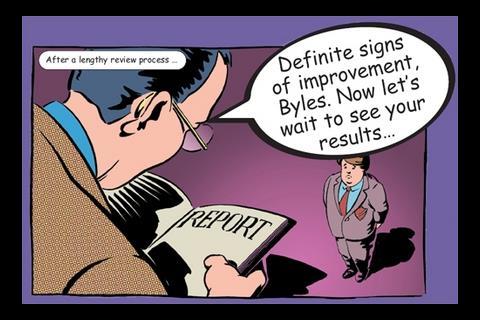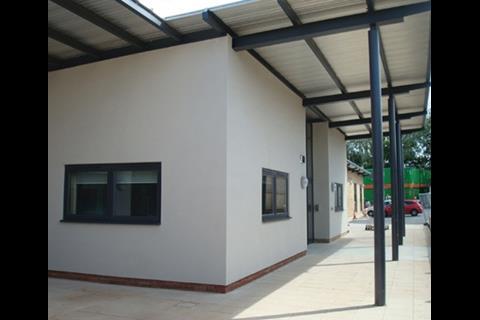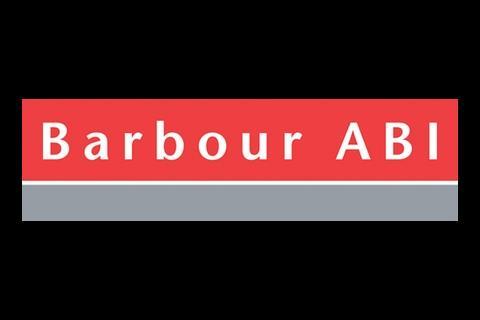The troubled past of the governmentŌĆÖs ┬Ż45bn school building programme has been well documented, but there seem to be signs that it is growing into a more mature and productive client. Kicking off our schools special, Thomas Lane charts its progress. Illustrations by Max Schindler
The construction industry is swallowing its doubts about the ║├╔½Ž╚╔·TV Schools for the Future programme. Well, it really doesnŌĆÖt have much choice: the shaky state of the commercial sector, and the catastrophic state of housebuilding, mean it cannot afford to snub an initiative that will, if all goes to plan, offer it something like ┬Ż45bn of work.
That said, the relationship got off to a difficult start. The idea of upgrading or replacing all 3,500 secondary schools in England was announced in 2004. Since then, 13 schools have opened before the start of this academic year, and 21 more opened last week. In the meantime, the industry has spent a huge amount on winning, or failing to win, work. The bidders for a typical BSF project can between them spend as much as ┬Ż15m, and each of the teams stands a better than even chance of losing their money.
The signs are that BSF is about to splutter into life and begin producing the 230 schools a year that are needed if the government to completing the programme by 2020.
Partnerships for Schools (PfS), the organisation charged with delivering the programme, and Tim Byles, its chief executive, have made some changes to address its critics. But will they be enough to to achieve its aim of delivering ŌĆ£transformationalŌĆØ education by 2020?
Slow starter
This ambition has already been called into question after Cabe recently described 80% of designs at an advanced stage as ŌĆ£mediocreŌĆØ, which hardly inspires confidence.
Then there is the issue of speed. A reason why the programme is so slow is the depth and complexity of BSF. It is not just a case of the odd new building. Rather, the programme is supposed to rethink the way education is done. Those of us in our thirties and forties will recall schools filled with rows of identical classrooms off a spinal corridor, each filled with files of identical desks. The experience of children now will be dominated by the computers and the internet. IT is a key ingredient in BSF schools, each of which is one node in a distributed network with access to the same resources. Another complicating factor is that these schools are not just for the kids but are meant to be accessible to the wider community.
This means a council really needs to define its vision before it puts a notice in the Official Journal. A winning consortium forms a local education partnership (LEP) with the sponsoring council to deliver all the schools in its area. The scope and long-term nature of its relationship means that the councilŌĆÖs plan has to hold good for 30 years or more.
According to Adrian Riddler, a project manager with Capita Symonds who advised Birmingham council on its BSF programme, this is not easy. ŌĆ£ItŌĆÖs all things to all people,ŌĆØ he says. ŌĆ£Some authorities want to fundamentally reconfigure education; to others, transformation means stopping the roof from leaking and putting in a new staff room.ŌĆØ He adds that local authorities need expert advice to transform the general PfS contract documentation into something suitable for their vision. Although this is time consuming, it must be more important to get it right rather than risk leaving a local authority stuck with unsuitable facilities.
Improving its grades
The good news is that there is scope to speed things up. Unnecessary delays are caused by local authorities not being ready for their allocated slot on the BSF programme. The 15-year programme has been organised into 15 waves with councils allocated a slot on the programme according to need. ŌĆ£Part of the reason for the slow delivery is that councils didnŌĆÖt organise themselves to deliver to the programme,ŌĆØ says David Long, the partner who heads Davis LangdonŌĆÖs delivery team.
PfS has changed the rules to allow local authorities that are ready to leapfrog those that are not, a move Long thinks will help speed up the process. ŌĆ£It places more onus on the council to get their business plan sorted out, because if they take their time thereŌĆÖs no guarantee of the money.ŌĆØ
Keeping the designs down to two means thereŌĆÖs more capacity in the market, plus there are the cost savings
Andrew Percival, Taylor Woodrow
Another time-saving and cost-cutting move has been to reduce the number of bidders from three to two. Moreover, each bidder has to design two sample schools as part of its bid rather than three or four, as was previously the case. The idea is that subsequent schools procured under a LEP are benchmarked against these initial designs, so that rather than labouring over as many as 12 establishments, bidders have four, which is a big saving. PfS reckons typical bid costs have been cut from ┬Ż10.4m to ┬Ż7m.
This has been universally welcomed, as Andrew Percival, Taylor WoodrowŌĆÖs sector director for healthcare and education, explains. ŌĆ£Keeping it down to two means the council is still getting a good focus on design without spreading itself too thinly in assessing them, and it means thereŌĆÖs more capacity in the market as people arenŌĆÖt designing schools that donŌĆÖt get used, plus there are the cost savings associated with that.ŌĆØ Percival points out that ultimately it is the local authorities that end up paying for the bid costs.
What about the criticisms of design quality? Originally, Cabe assessed completed designs, which meant it was difficult to make changes. Now it is involved during the design process, which means problems can be identified earlier. But some architects think the review process is unfair. Cabe uses 10 categories (see pages 52-59) and a school can achieve an excellent standard in nine but get marked down overall if it gets a mediocre in the last one. Caroline Buckingham, the director in charge of education at HLM Architects, says: ŌĆ£It can be very hard to have an impact on certain categories, for example a very religious school may not want much community involvement but you get marked down if the design doesnŌĆÖt encourage that. A points-based system would be much better.ŌĆØ
Buckingham adds that a lot of the work done by the local authority to define what it wants is repeated by the consortiums bidding for the work. She thinks time and money could be saved by developing a concept design that is then passed on to the bidders.
While it is good that there is so much focus on quality design, the big question is whether this will be maintained for the duration of the LEP. The idea is that subsequent schools will be benchmarked against the sample schools. This is a somewhat subjective process, and a mechanism needs to be found to enforce it. And if budgets get squeezed (the Comprehensive Spending Review only guarantees funding up to 2011) then later schools will suffer. Taylor WoodrowŌĆÖs Percival remains bullish: ŌĆ£We must make sure we get it right, as the best form of marketing is to make sure we have a successful LEP.ŌĆØ
Now procurement has been improved, more schools should be built, Percival thinks it is a good time for contractors to jump on the BSF bandwagon. ŌĆ£You have to look at where the money is being spent and healthcare is currently very quiet.ŌĆØ
But BSF is no get-rich-quick scheme.
ŌĆ£There arenŌĆÖt big returns in education,ŌĆØ says John Howard, BouyguesŌĆÖ senior commercial manager, who is on his third BSF scheme. ŌĆ£But itŌĆÖs a good solid business to be in.ŌĆØ Both Percival and Howard emphasise that the benefit is a long-term supply of work, and the partnering approach means contractors are ideally placed for other local authority work outside BSF.
They warn that the complexity of BSF and the wide range of skills needed is a serious barrier to entry, but the determined could break in, and if contractors cannot lead a LEP there will be opportunities for them to build schools as subcontractors.
So what is the verdict on BSF? The one hard metric ŌĆō improved exam results ŌĆō is difficult to determine, as it takes years for the results to filter through. But PfS has seized on the good results from new schools this year to say the programme has been vindicated. Regardless of this, most of the school estate is in such poor condition that something has to be done. The ambitions of the programme mean this cannot be sorted out cheaply or fast; the good news is that areas ripe for improvement have been tackled by PfS.
The key is to keep improving the procurement and design process. The other issue is to not let the programme go off the boil in the later stages, and given the increasingly shaky state of public finances this is some challenge.
BSF in numbers
- Number of schools now open 13
- Number of schemes to have reached financial close 22
- Number of LEPs 13
- Value of capital investment ┬Ż2.5bn already committed (rising to ┬Ż3.9bn if future phases in these authoritiesŌĆÖ areas are included)
- Number of local authorities in BSF to date 80
- Number of schools opening in September 2008 21 (including two primaries being delivered by a LEP)
- Future delivery targets 35 schools in financial year 2008/09; more than 100 in 2009/10; up to 200 in 2010/11.
A quick guide to BSF procurement
The government has pledged ┬Ż45bn to rebuild or refurbish all 3,500 secondary schools in England. Delivering this is a massive challenge so the Departmetnt for Children, Schools and Families has set up a dedicated delivery body called Partnerships for Schools (PfS), which is responsible for managing the BSF programme. It has also taken responsibility for delivering the 400 city academies that have now been subsumed into the BSF programme.
Because of the size of the programme it has been divided into 15 waves. Local authorities are allocated a slot in a wave, and currently the first six are fully allocated. The rules were recently changed so that if a council is not ready when its slot comes up it can be replaced by another that is.
A lot of preparation is needed before the local authority can go to market. PfS has project directors and specialist education directors to advise, as well as standard documentation. The local authority has to work out its overall educational vision. Once it has organised this into a business case it is ready to go to the market.
The standard form of procurement is known as a local education partnership (LEP). This can cover just one local authority area, or smaller local authorities can club together. The idea is that the authority partners with a specialist provider that then builds the schools, including the IT provision, over a number of years. Specialist providers bid for a LEP by submitting two sample school designs; these are accompanied by a competitive dialogue process that boils the bidders down to the two that formally bid.
Although LEPs are the preferred procurement route, local authorities can opt to procure schools directly through PFI or another procurement route. PFI is also used within a LEP; indeed some schools could be procured under PFI and others use design and build under a single LEP. Just to confuse things further, city academies can be procured using a LEP or through the existing framework agreement, which consists of six contractors. PfS is set to create a new framework that will probably be larger, and used to procure smaller BSF schemes as well as academies.
Some lessons learned

Rajinder Sanghera was a deputy head teacher at Smiths Wood school in Solihull in the West Midlands until he resigned over his frustration with the ║├╔½Ž╚╔·TV Schools for the Future programme. He now has a role at Atkins as an education and IT consultant and is on a mission to improve the programme. He says BSF is on a ŌĆ£steep learning curveŌĆØ and that everyone involved is learning from early mistakes. So what went wrong at his school, and what can we learn from it?
1. Procurement
On the Smiths Wood scheme, Sanghera says there was a lack of ŌĆ£intelligent, strategic procurementŌĆØ. So how did procurement work? Solihull council didnŌĆÖt procure a Local Education Partnership (LEP). Instead, it took the unusual step of appointing a PFI consortium, an HBG-led group called BAM PPP. SangheraŌĆÖs main complaint is that the local authority procured IT separately from the PFI consortium. The upshot, he says, was that IT was not integrated into the design.
David Butt has been IT strategy manager at Solihull councilŌĆÖs education department throughout its involvement with BSF. He says that although the building was procured separately from IT, which was provided by a company called RM Education, the builders and IT supplier worked together closely. He says an ŌĆ£interface agreementŌĆØ was set up that allowed the two entities to operate ŌĆ£like a LEPŌĆØ.
He says forming a LEP was ruled out as it was too expensive for SolihullŌĆÖs BSF project, which involved only six schools in wave one ŌĆō the rest of the boroughŌĆÖs schools will be tackled much later, in waves 13 to 15.
2. Design
Sanghera says ŌĆ£all the best IT equipment was put in a single room. So you had to timetable all 1,400 pupils, as well as staff, around one room. You can only have five lessons a day, which means 25 a week ŌĆō clearly not enough for 1,400 studentsŌĆØ.
He also criticises the server arrangements. Only one server room was planned, on the ground floor near the front of the building. He argues that such a design means that equipment and paper have to be delivered through the front door, which would be better reserved for guests. ŌĆ£ItŌĆÖs also much easier to break into if itŌĆÖs there, as opposed to on a floor higher up the building and away from the entrance.ŌĆØ
Having all the servers and technicians in one room was not ideal either, he says. ŌĆ£People come to talk to the technicians all the time, so the doors of the room they are in will be opened all the time. You canŌĆÖt have this if there are servers in the room because it affects the temperature and you need to control the temperature of a server room.ŌĆØ
And design issues are not confined to IT, Sanghera says. ŌĆ£As a teacher, for me design is not about how fancy a school looks. ItŌĆÖs about delivering the business of the school.ŌĆØ He says a large atrium may look lovely, but if there are walkways above it, ŌĆ£pupils will just throw stuff down onto students below and youŌĆÖll end up having to put up nets retrospectivelyŌĆØ.
These days children are ŌĆ£nomadic learnersŌĆØ ŌĆō they move around and visit other schools for particular lessons. This means that IT systems that allow schools to synchronise timetables and buildings that are easy to navigate. ŌĆ£We need a Tesco approach: pupils must be able to walk in and get straight to what they want.ŌĆØ
Butt says: ŌĆ£The design was agreed with the school. ItŌĆÖs true it does have IT concentrated in certain areas, but IT is in every room and the entire building has wireless access. The technicians are in the server room, but they do have to be based somewhere, as did the server room itself. Also, an internet cafe is planned.ŌĆØ
3. Change management
Sanghera wants to see the changes BSF brings handled better. ŌĆ£Even now, lots of local authorities want shiny new schools but they havenŌĆÖt thought about the change management process that needs to go with them,ŌĆØ he says. ŌĆ£ThereŌĆÖs no point having a new school if people donŌĆÖt know how to make it work. ItŌĆÖs no good installing a load of new equipment without training the teachers in how to use it.ŌĆØ
One part of change management, he says, is looking after students in their final years of school. ŌĆ£The students in years nine, 10 and 11 feel they wonŌĆÖt see the benefits of BSF. It creates a mentality that leads to exam results actually falling.ŌĆØ
One solution is to get the older students more involved in design consultation. Another approach is to make some elements of the project happen earlier. Sanghera advises buying computers and digital signage and installing them in the old school long before construction has started. ŌĆ£It tells students that theyŌĆÖre cared about,ŌĆØ he says, ŌĆ£and the equipment can be re-used in the new school.ŌĆØ
By Roxane McMeeken



































No comments yet